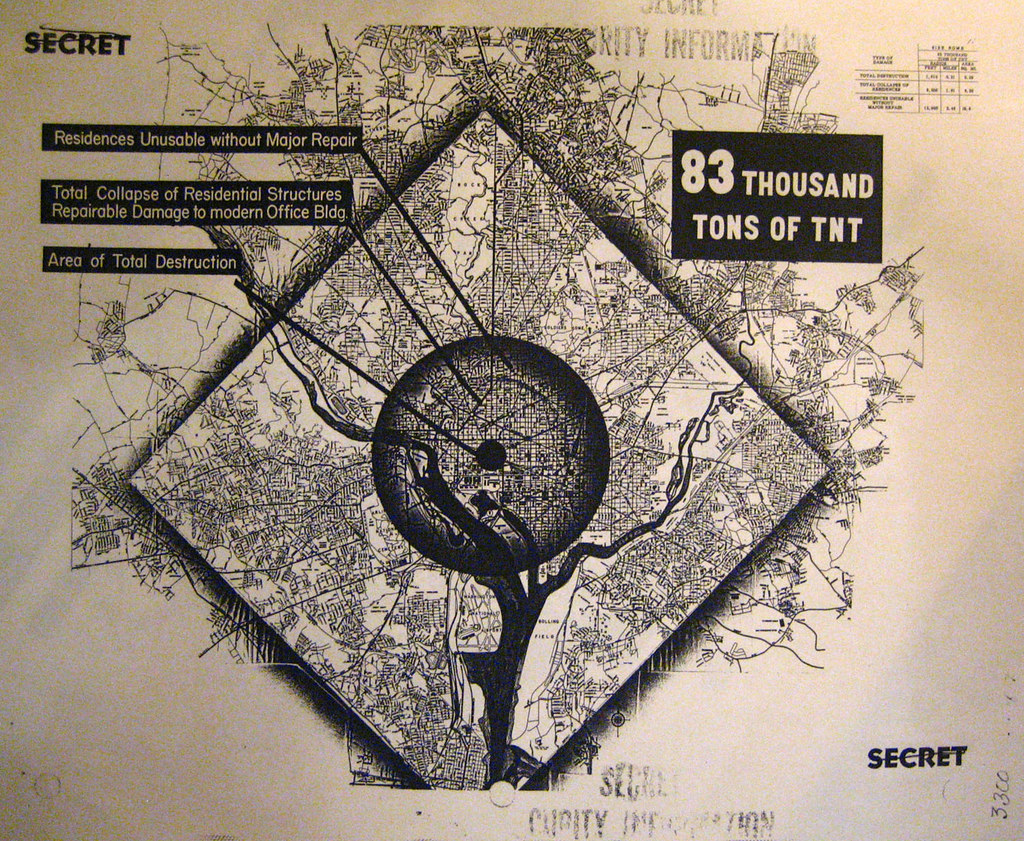This year has been a peculiar experience, hasn’t it? Our personal lives have been thrown into a weird limbo by quarantines, and there’s seemingly no shortage of meltdowns in everything from politics to economics to entertainment.

But there’s one thing on the 2020 Bingo Card that so far hasn’t materialized — nuclear war. We’re still two months away from New Year’s, so fingers crossed that it stays that way. Because, as a pretty nifty project by filmmaker Neil Halloran shows, such an event would carry a massive death toll.
Big bomb
The short documentary was created in partnership with the Nobel Peace Prize Research & Information (NPPRI), an “independently organized and funded research wing of the Norwegian Nobel Institute”. It aims to foster academic research and routinely invites various specialists to Oslo for conferences, seminars, and similar events.
The NPPRI provided the data, and Halloran put it on film. The scenario they looked at involved a “relatively large” warhead of 800 kilotons, detonated around 500 meters (roughly 1650 ft) above ground level in a city with 4 million inhabitants.
“No number could account for the devastation [such as strike would cause], but we can put a number on the deaths; at least, we can make an educated guess based on our understanding of what nuclear blasts do to city structures and people,” Halloran, the narrator, explains in the video.
Air-burst detonation maximizes the damage such a warhead can inflict, he explains. A nuclear detonation basically brings a star, for a fraction of a second, onto the surface of the Earth. The heat and pressure generated by this event would be monumental. Roughly 120,000 people in this scenario — 98% of those in a 2 km (1.2 mi) radius around the blast — would instantly perish, the team estimates. All buildings inside this area would be wiped clean off the face of the Earth, or crumble and be hurled outwards at great speeds.
Outside the 2 km mark, the pressure generated by the explosion drops low enough that people would have a chance of surviving the shockwave (although slim). The temperatures involved, however, are still very deadly indeed. Heat released by a nuclear reaction can cause skin to spontaneously combust even outside this 2 km radius. Anyone exposed in an 11 km (roughly 6.8 mi) radius would suffer 3rd-degree burns. Even those who are inside or otherwise protected aren’t completely safe, either. The debris generated by the blast would “rip through buildings and rain down on city streets”, which is far from ideal.
Then, there’s fallout. Estimating the exact toll that radiation sickness would have is tricky. For starters, how the warhead is used matters a lot. Air-burst detonations generally lead to much less radiation contamination in the immediate area; a ground-level detonation would cause massive contamination. The presence of fallout shelters, and exactly how locals react to the event, also matter. Anywhere between 100,000 and 1.44 million people could lose their lives to radioactive fallout depending on these elements, according to Halloran, in the days and weeks following the strike.
All in all, the video (which I highly recommend you see, because it’s very well made) stands as a chilling reminder that humanity has managed to put stars themselves inside a weapon. We’ve placed terrible power into the hands of a few people, and trust that they won’t use it out of fear of retaliation. We’ve already had some hiccups in that regard. The world is in a very murky place right now, and there’s no better time to heed the lessons of the past.
This video shows what a single relatively high-yield nuclear warhead can do. As of 2020, there are approximately 9,500 active nuclear warheads globally, and around 13,500 total nuclear warheads left in the world, according to the Arms Control Association.
We’d do well to remember that these are not toys, and there will be no victors if they’re ever brought to bear.


